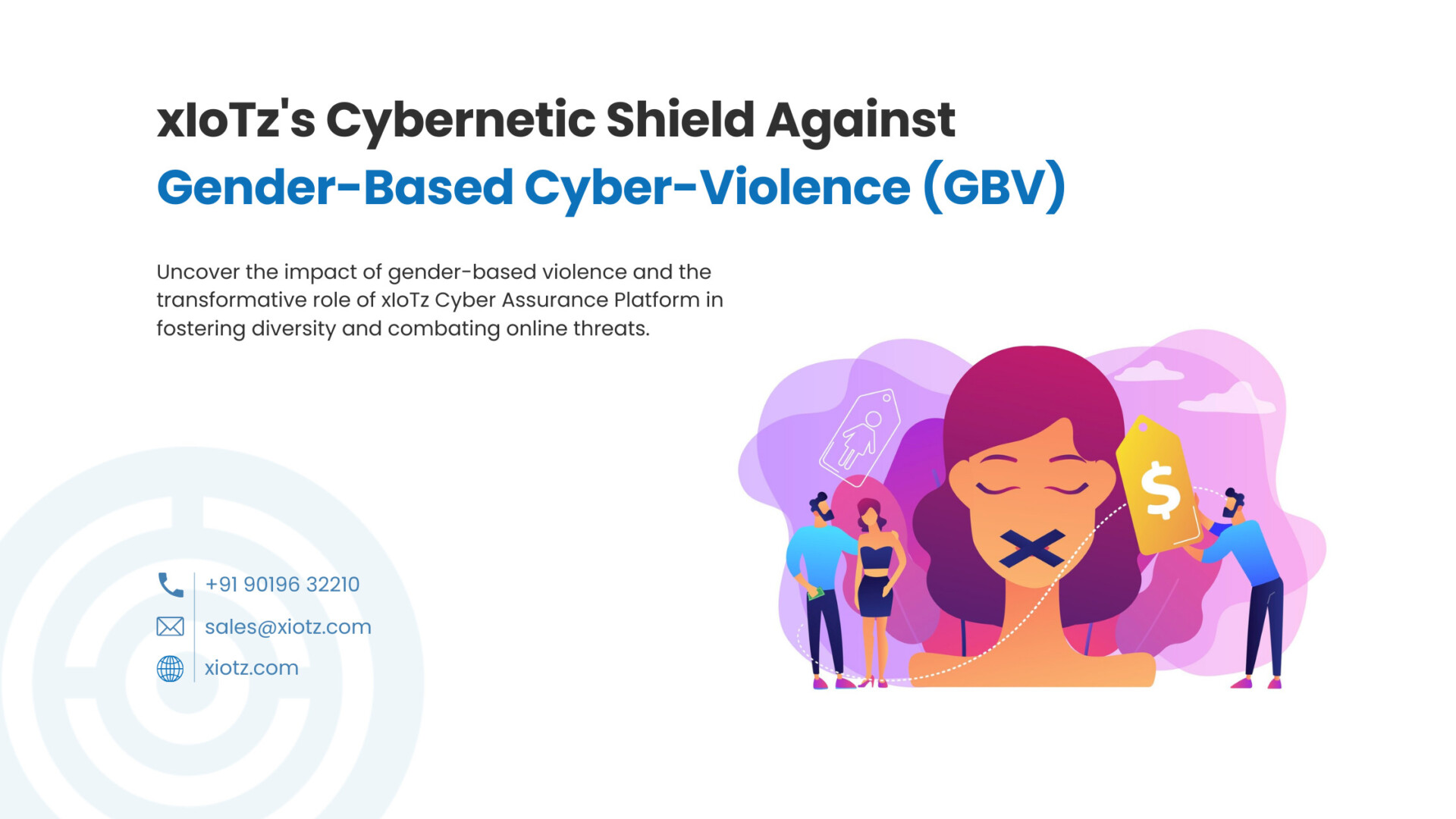Table of Contents
Introduction
Gender-based violence (GBV) is a pervasive issue yet unspoken one affecting millions worldwide, transcending borders, cultures, and socio-economic statuses in the era of digital interactions and virtual connections.
Gender-based violence is when someone is treated badly because of their gender. It happens because some people believe one gender is better than the other. Both boys and girls can go through this cyber violence, but most of the time, it’s girls and women who face it.
Root cause of Cyber-based Gender Violence
- Unnoticed biases and stereotypes deeply embedded in cultures can lead to online gender violence.
- Individuals are vulnerable to cyber-based gender violence due to a lack of knowledge about safe online practices and tools, leading to underreporting of incidents fueled by fear, shame, or unawareness of available support.
- Stereotypes about how men and women should behave can also lead to cyber violence.
- When one gender has more power than the other, it can create an environment where violence happens.
- Not having enough money or resources can make some people more likely to experience violence.
- If people don’t know about what’s right and wrong, it can make it harder to stop gender-based violence.
The Harsh Reality:
- Research by the World Health Organization indicates that one in three women will have experienced some form of violence in her lifetime, including cyber-based gender violence.
- One in ten women in the European Union has encountered cyber-harassment since the age of 15, which includes receiving unwanted and offensive online messages.
- In major cities across Africa, 39% of girls express significant concern about their safety online, highlighting the widespread fear and impact of cyber-based gender violence.
- Misinformation and defamation (67%), cyber harassment (66%), and hate speech (65%) are among the most prevalent forms of online violence against women.
Causes of Cyber-based Gender Violence
- Online Spaces for Misogyny: The availability of online platforms provides spaces for communities with misogynistic and violent ideologies to increase gender-based violence.
- Anonymity: The anonymity provided by the internet allows people to engage in abusive behavior with reduced fear of consequences.
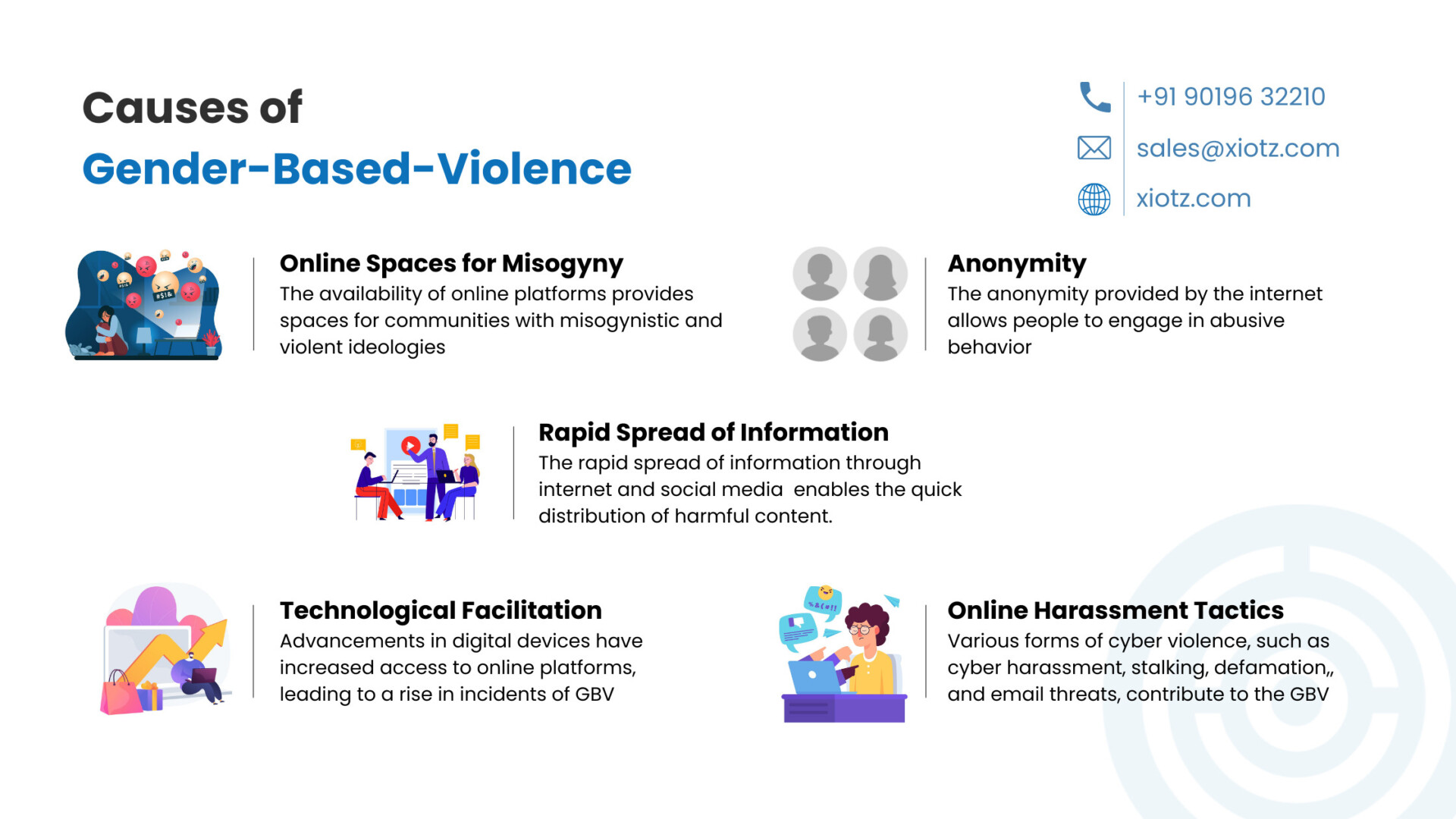
- Rapid Spread of Information: The rapid spread of information facilitated by the internet and social media platforms enables the quick distribution of harmful content and cyberbullying targeting women.
- Technological Facilitation: Advancements in technology, such as smartphones and digital devices, have increased access to online platforms, leading to a rise in incidents of cyber-based gender violence.
- Online Harassment Tactics: Various forms of cyber-based violence, including cyber harassment, cyberstalking, defamation, non-consensual pornography, and email threats, contribute to the gender violence online.
How does Digital Gender Violence impact someone’s life?
- Psychological Trauma: Victims may experience anxiety, depression, and post-traumatic stress disorder (PTSD) due to the constant harassment and violation of privacy.
- Physical Safety Concerns: Threats made online can escalate to physical violence offline, leading to genuine fears for one’s safety.
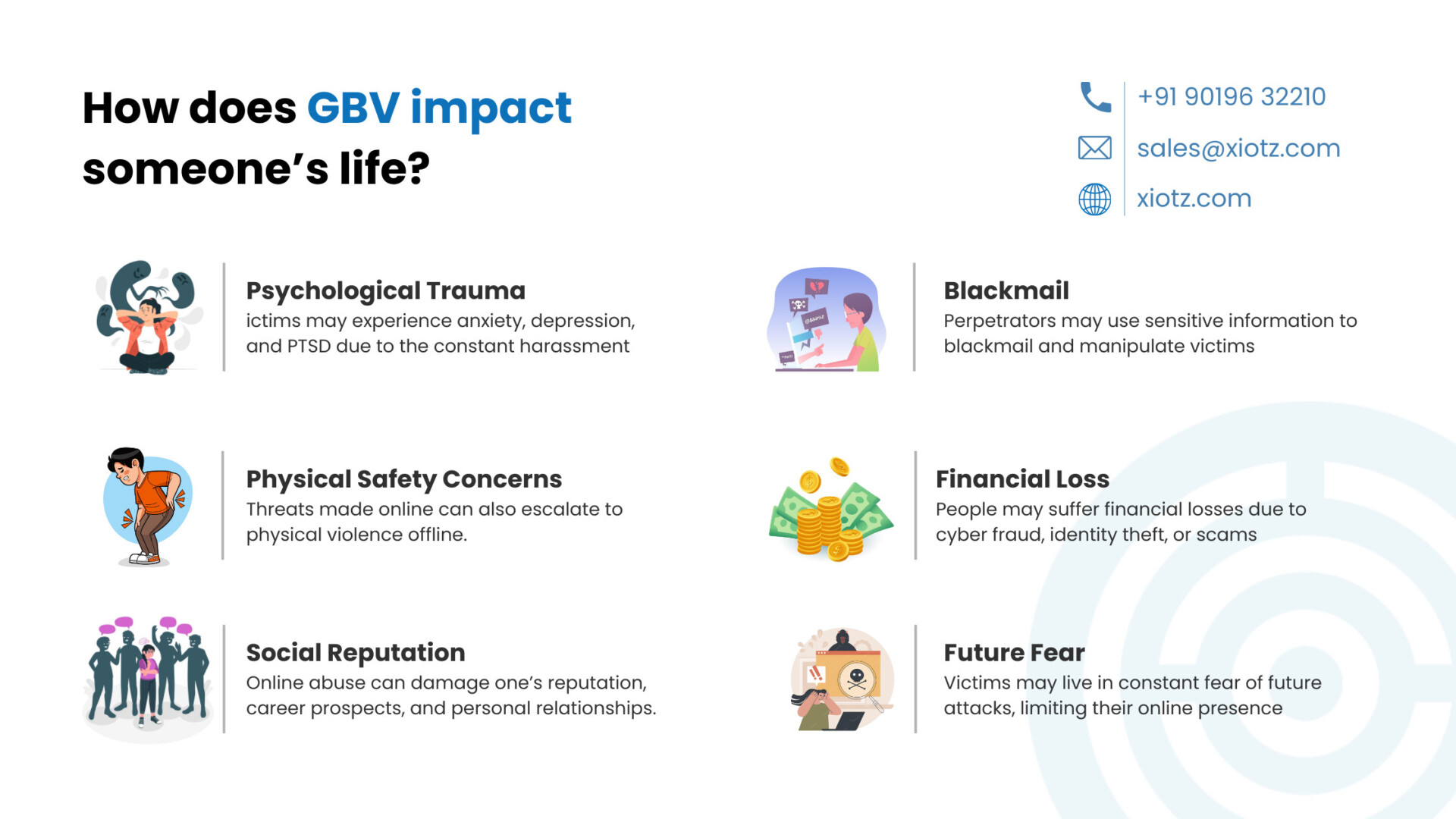
- Professional and Social Reputation: Online abuse can damage one’s reputation, career prospects, and personal relationships, leading to social isolation and economic instability.
- Blackmail: Perpetrators may use sensitive information obtained online to blackmail and manipulate victims by silencing their voices, reducing their public participation.
- Financial Loss: Women may suffer financial losses due to cyber fraud, identity theft, or scams, impacting their economic stability.
- Future Fear: Victims may live in constant fear of future attacks, limiting their online presence and hindering their ability to engage in digital spaces.
Who is Most Vulnerable?
Anyone can be targeted by cyberviolence, but certain groups are at higher risk, including: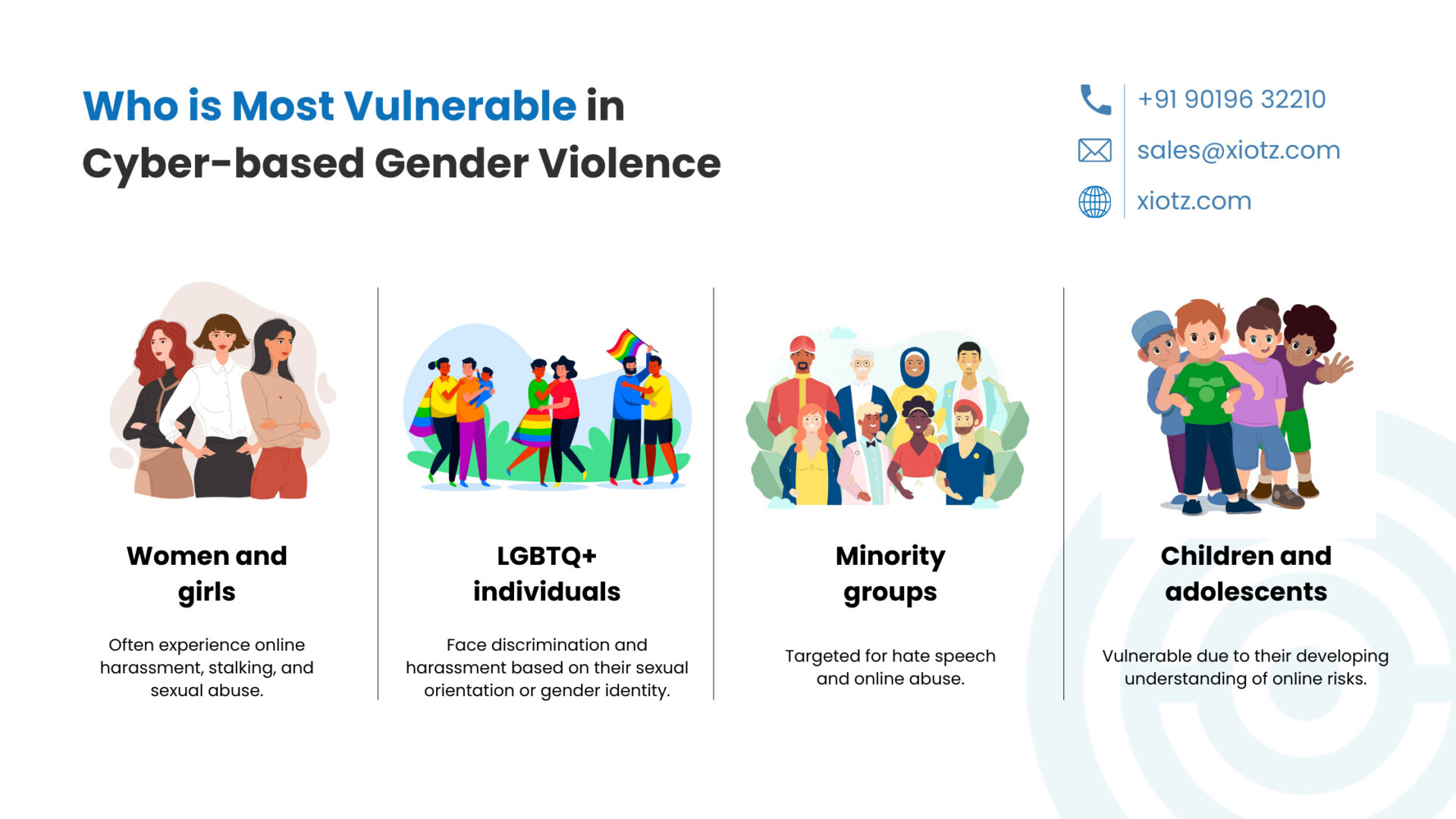
- Women and girls: Often experience online harassment, stalking, and sexual abuse.
- LGBTQ+ individuals: Face discrimination and harassment based on their sexual orientation or gender identity.
- Minority groups: Targeted for hate speech and online abuse.
- Children and adolescents: Especially vulnerable due to their developing understanding of online risks.
Why are Women and Girls More Vulnerable?
Several factors contribute to the increased vulnerability of women and girls to gender-based cyberviolence: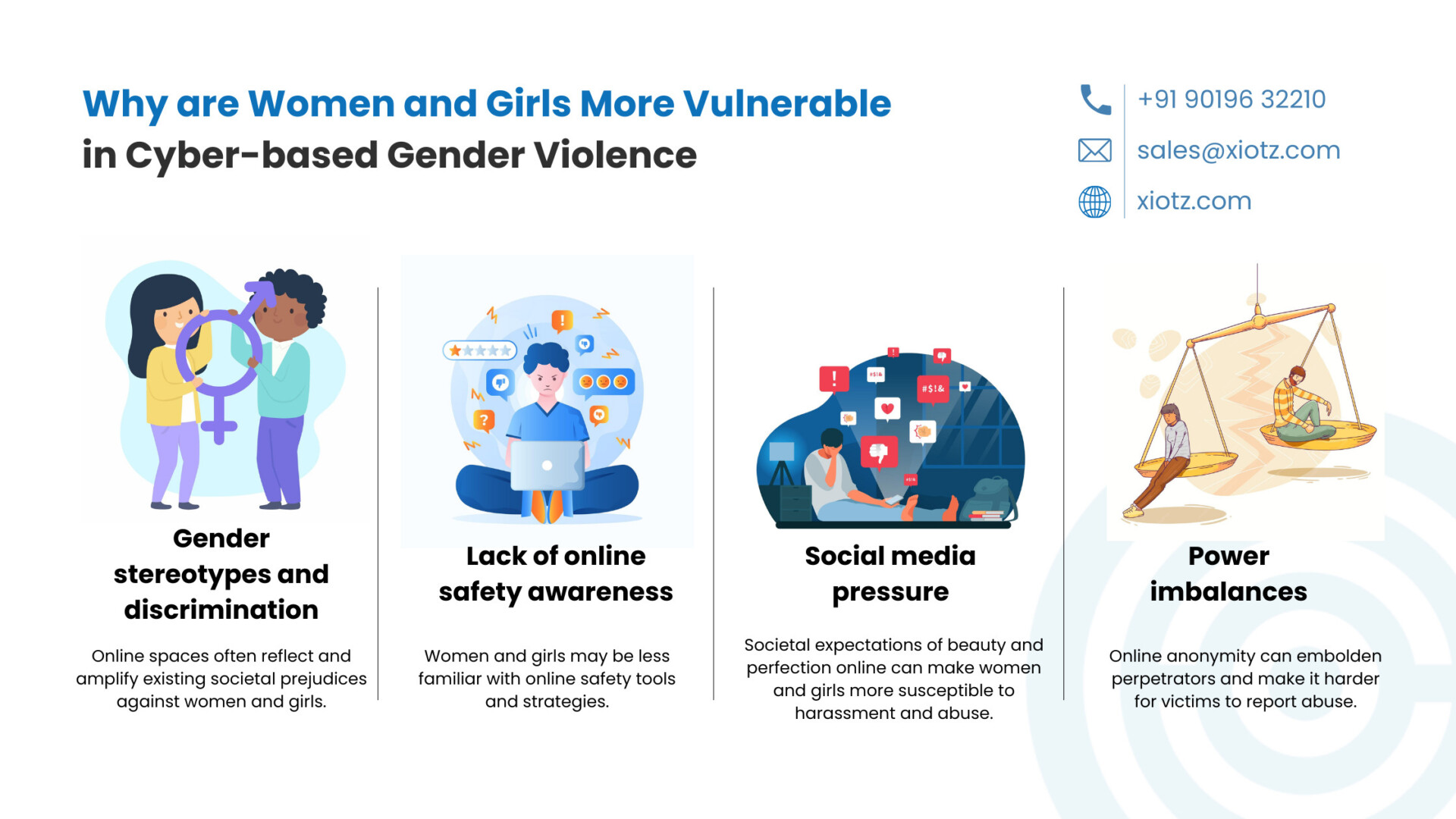
- Gender stereotypes and discrimination: Online spaces often reflect and amplify existing societal prejudices against women and girls.
- Lack of online safety awareness: Women and girls may be less familiar with online safety tools and strategies.
- Social media pressure: Societal expectations of beauty and perfection online can make women and girls more susceptible to harassment and abuse.
- Power imbalances: Online anonymity can embolden perpetrators and make it harder for victims to report abuse.
Challenges of Gender-Based-Violence
- Cyberbullying: This includes harassment, threats, or intimidation directed at someone online. It can be particularly harmful when it targets an individual based on their gender.
- Revenge Porn: Sharing intimate or explicit content without consent, often as a form of retaliation or humiliation.
- Online Harassment: Persistent and unwanted behavior that causes distress or fear. It can take various forms, such as stalking, trolling, or hate speech.

- Sexual Exploitation: This involves coercing or manipulating someone into sharing sexual content or engaging in sexual acts online.
- Doxxing: Revealing someone’s private information (such as address, phone number, or workplace) with malicious intent.
- Online Misogyny: Expressing hatred or prejudice against women through online platforms.
How to MITIGATE these challenges?
Cyber Crime Portal:
- Visit the Cyber Crime Portal website:Cyber Crime Portal.
- Choose the appropriate option based on the nature of the cybercrime:
- Women or Children related Crime
- Financial Fraud
- Other Cybercrimes
- Fill out the necessary details in the online form provided on the portal.
- Provide accurate information regarding the incident, including details such as date, time, and description of the cybercrime.
- Upload any supporting evidence or documentation related to the cybercrime, if available.
- Review the information entered to ensure accuracy and completeness.
- Submit the report through the portal.
- After submission, you may receive a confirmation or reference number for tracking purposes.
- Await further communication or action from the authorities regarding your report.
Empowerment Through Technology
- Tech solutions such as Safetipin can raise awareness and mitigate the risk of violence.
- Create and deploy tech tools such as AI-powered chatbots and mobile apps designed to provide immediate assistance, resources, and reporting mechanisms for victims of cyber gender-based violence.
- Implement digital literacy initiatives targeting women and girls to enhance their understanding of online risks and safe internet practices.
- Stop victim shaming and blaming and create a supportive environment for survivors.
- Avoid gender stereotypes and promote gender equality to prevent violence.
Remember:
- If you or someone you know is experiencing cyberviolence, report it to the platform where it’s happening and seek help from trusted adults, support organizations, or law enforcement.
- Be mindful of your online behavior and treat others with respect.
- Together, we can create a safer and more inclusive online environment for everyone.
Here are some additional resources:
- The Council of Europe: https://www.coe.int/en/web/cybercrime
- StopBullying.gov: https://www.stopbullying.gov/
- National Center for Missing and Exploited Children: https://missingkids.org/
xIoTz: Cyber Assurance Platform
xIoTz, a cutting-edge cyber assurance platform, plays a crucial role in GBV prevention by promoting gender equality through diverse practices and impactful initiatives, fostering a more inclusive and equitable workplace and industry.
A Less know Lesson from xIoTz:
xIoTz demonstrate support for gender equality through several initiatives and practices:
- Respectful, inclusive culture with equal opportunity for all employees.
- Flexible work options and family-friendly policies for work-life balance.
- Offers resources and solutions specifically addressing cybersecurity vulnerabilities faced by women.
- Partners with organizations empowering women and tackling online abuse.
- Encourages interest in STEM fields like cybersecurity, breaking down stereotypes.
- Women leaders serve as role models and inspiration for aspiring professionals.
xIoTz Women: Transforming Cybersecurity and Championing Diversity
- Leadership in Diversity: Aradhana Rai, the visionary cyberpreneur behind xIoTz, leads the charge in promoting gender diversity and fostering a workplace free from gender-based violence.
- Inclusive Initiatives: From equity and flexible work arrangements to mentorship programs and gender-neutral recruitment, xIoTz implements a range of initiatives to create an inclusive and supportive work environment.
- Statistical Success: With 40% of its workforce comprised of women and 89% of company equity owned by women, xIoTz sets a precedent for gender diversity and equity in the cybersecurity sector.
- Equity over Equality: xIoTz advocates for equity, ensuring equal pay, treatment, and opportunities for all employees, past, present, and future.
- Recognition of Excellence: The winner of the “National Technology Awards 2023,” xIoTz demonstrates that diversity fosters innovation and excellence in cybersecurity.
- LGBTQ+ Inclusivity: xIoTz’s Non-Discrimination Policy prohibits discrimination based on sexual orientation, gender identity, or gender expression, creating a safe and welcoming workplace for LGBTQ+ individuals.
- Differently-Abled Friendly: xIoTz accommodates differently-abled individuals with remote work options and a workplace designed to cater to their needs, promoting inclusivity at all levels.
In the fight against gender-based violence, xIoTz showcases how a commitment to diversity, inclusivity, and equal opportunities can make a tangible difference in the cybersecurity landscape and beyond.
Conclusion
Gender-based violence is a multifaceted issue with far-reaching consequences for individuals, families, and societies.
xIoTz Cyber Assurance Platform emerges as a catalyst for change, not only safeguarding against digital threats but actively fostering gender equality. Aradhana Rai’s leadership sets a standard for diversity, making xIoTz a transformative force in cybersecurity. With its commitment to equity, LGBTQ+ inclusivity, and a friendly environment for differently-abled individuals, xIoTz showcases the potential of technology to combat gender-based violence.
xIoTz addresses the root causes, raises awareness, and implements comprehensive prevention strategies that serves as an inspiring model for the industry, urging others to embrace diversity and contribute to a safer, more equitable world.
Stay informed, stay safe, and stand up against Cyber-based Gender Violence.
Reference:
https://www.unfpa.org/gender-based-violence
https://www.unhcr.org/what-we-do/protect-human-rights/protection/gender-based-violence
Related Blogs:
Top 10 cyber crime against WOMEN
The Dark Side of Technology: Cyber Terrorism
Related Terms:
Quick Links:
Partner with us for synergistic growth
Pursue your passion with xIoTz
